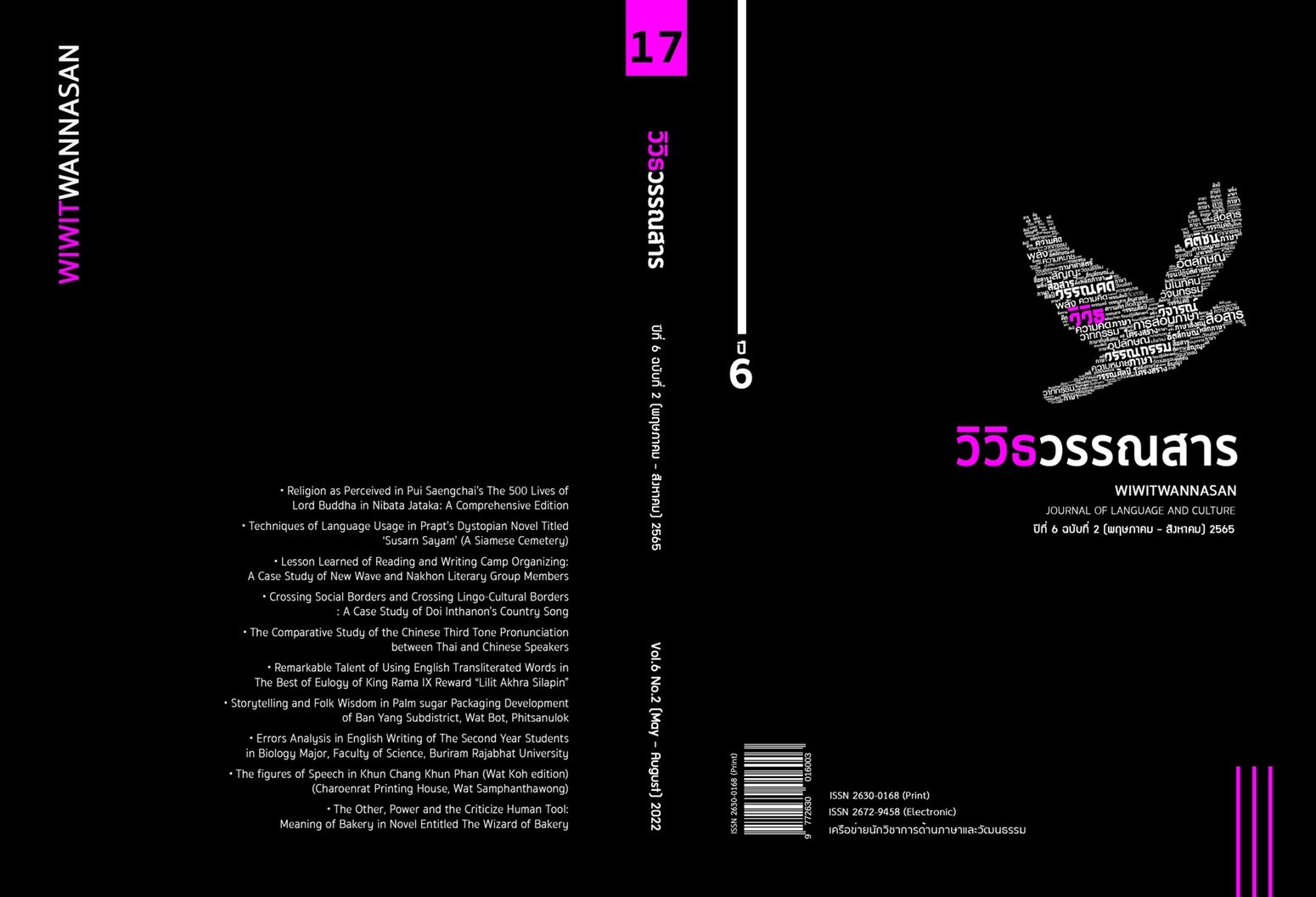The figures of Speech in Khǔn Cháŋ Khǔn pɛ̌n (Wát Kɔ̀ edition)
Main Article Content
Abstract
Khun Chang – Khun Phan (Wat Kho edition) is the literary work that used variety of figures of speech which can be separated into three groups as rhetorical figure, trope and figure of sound.
There were five categories of rhetorical figure that were used in the literature as hyperbole, litotes, meiosis, and personification. In the other hand, irony, paradox, oxymoron and rhetorical question were not founded in the work.
All categories of trope – simile, metaphor, symbol, metonymy, synecdoche, allusion, analogy and antithesis - were found in the work.
In the same way, all categories of figure of sound – alliteration, assonance and onomatopoeia - appeared in the work.
Even figures of speech in Khun Chang – Khun Phan (Wat Kho edition) were not much prominent as the speeches in other royal court literary works but there was fascination of folk literature as the work excellently used the figure of speeches convey the images to the audiences.
Article Details

This work is licensed under a Creative Commons Attribution-NonCommercial-NoDerivatives 4.0 International License.
Copyright is that of the journal any reproduction must be permitted by the editor of journal
References
Anchaliinukul, k. (2005). ‘Playing with languages : the use of figures of speech in Sophak Suwan's novels’. Bangkok : Dhurakij Pundit University. (In Thai)
Baker, C. and Pongpaijit, P. (2013). Khun Chang – Khun Phaen (Wat koh edition). Chiengmai : Silkworm. (in Thai)
Ditisood, A. (2014). ‘The Use of Figurative Language In Kumarakhamchan’. Journal of Humanities Naresuan University. Year 11th May-Aug. (In Thai)
KhunWijitmatra. (2002). The stories of Khunchang Khunphen. 2nd. Bangkok : Amrin Printing Publishing. (in Thai)
Liamprawat, S. (2015). ‘Rhetorical Modes and Figures of Speech in Royal Speech by King Rama VI’ in Languages and Literature. SMATRS 5th on July 3. (in Thai)
Manying, W. (2016). ‘An Analysis of Figurative Language in the Khmer Version of MAHAVESSANTARA JATAKA (Gan Thanagan)’. Journal of Humanities Naresuan University. Year 9th Jan-Apr. (In Thai)
Nimmanahaeminda, P. (2018). Sang Sin Chai. Cited July 31th. Available from: https://www.sac.or.th/databases/thailitdir/detail.php?meta_id=250 (in Thai)
Praphaphityakon, P. (nd.). Basic knowledge of Thai literature. Bangkok : Srinakarinwirot University, Bangkhen. (in Thai)
Sirichai, B. (1990). Nonverbal communication in Khun Chang – Khun Phaen. Master degree, Graduate School, Srinakarinwirot University. (in Thai)
Sornjai, N. (2002). Comparative study of the adapted versions of Khun Chang – Khun Phaen. Master of Arts, Graduate School, Silpakorn University. (in Thai)
Suwunchompoo, C. (2003). ‘The knowledge of Figure of Speech’ in Thai for Communication. 60-74, Churairat Laksanasiri and Weerawat Intaraporn (editor), Nakornpathom : Silpakorn University. (in Thai)
Thananchai, P. (1985). An analysis of figure of speech in literature appeared in Thai text-books for required courses at the upper secondary education level. Master of Education, Department of Secondary Education, Graduate School, Chulalongkorn University. (in Thai)
The Royal Institute. (2002). Dictionary of literary words (English-Thai), The Royal Institute Edition. Bangkok : Arun Printing. (in Thai)
________. (2009). Dictionary of Thai literary words (Prosody). Bangkok : The Royal Institute. (in Thai)
________. (2009). Dictionary of Thai literary words. Bangkok : The Royal Institute. (in Thai)
________. (2013). Dictionary of Thai, The Royal Institute 2011 Edition. Bangkok : The Royal Institute. (in Thai)
The Royal Society. (2007). The radio program ‘Ruu rak phaa saa thai’ September 20th. (in Thai)
________. (2018). Dictionary of Literary words, The Royal Society Edition. 2nd. Bangkok : Office of the Royal Society. (in Thai)


